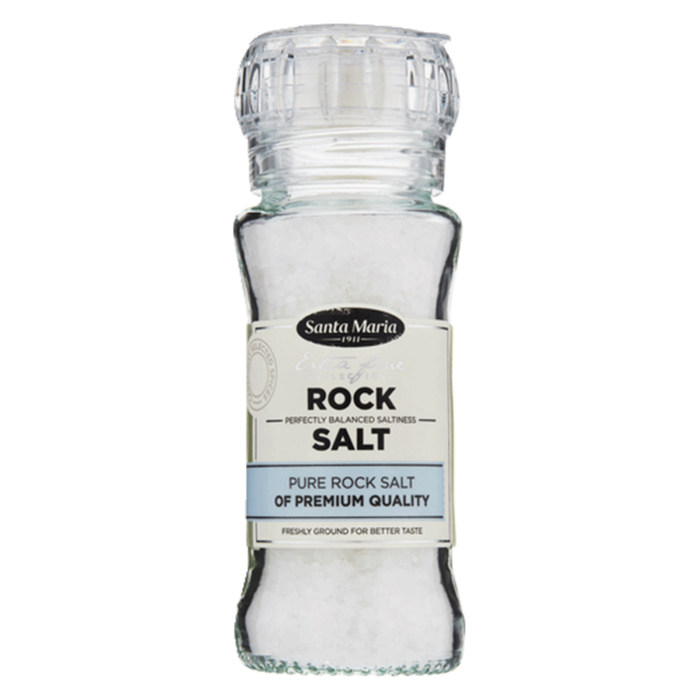
Salt: The Flavor Enhancer
Ah, salt. The humble yet powerful ingredient that has been a staple in kitchens around the world for centuries. It's the one ingredient that can make or break a dish, and it's also the one that has been at the center of trade wars, political power struggles, and even religious rituals. But what is it about this simple compound that makes it so essential to our culinary adventures? Let's dive into the world of salt and explore its history, properties, and uses.
A Brief History of Salt
Salt has been harvested and used by humans for thousands of years. In fact, evidence suggests that as far back as 6000 BC, people were already using salt to preserve food and enhance flavors. The word "salary" even comes from the Latin word "salarium," which was the money paid to Roman soldiers to buy salt. Yes, salt was once considered so valuable that it was used as currency!
Throughout history, salt has played a significant role in various cultures and civilizations. The Egyptians used it for mummification, while the Greeks and Romans believed that salt had healing properties. In medieval Europe, salt was so expensive that only the wealthy could afford it, leading to the phrase "worth his salt" to describe someone who was highly skilled or valuable. Today, salt is much more accessible and affordable, but it remains an essential part of our lives and our cooking.
Types of Salt
While all salt is primarily composed of sodium chloride (NaCl), there are actually many different types of salt available, each with its own unique properties and uses. Here are some of the most common types you might encounter:
Table Salt
This is the regular, everyday salt that you probably have in your kitchen right now. Table salt is typically mined from underground deposits and is heavily processed to remove impurities and add anti-caking agents. It usually contains added iodine, which is essential for proper thyroid function. Table salt has a fine, uniform texture and a sharp, clean flavor.
Sea Salt
As the name suggests, sea salt is harvested from evaporated seawater. It's usually less processed than table salt, which means it retains trace minerals like magnesium, potassium, and calcium. These minerals give sea salt a slightly more complex flavor profile, and they can also affect its color and texture. Sea salt comes in a variety of coarseness levels, from fine to very coarse.
Kosher Salt
Despite its name, kosher salt isn't necessarily certified as kosher. The name actually comes from its use in the koshering process, where it's used to draw blood out of meat. Kosher salt has a larger, flakier crystal structure than table salt, which makes it easier to pinch and sprinkle evenly over food. It's also less likely to contain additives like iodine or anti-caking agents. Many chefs prefer kosher salt for its pure, mild flavor and easy-to-handle texture.
Himalayan Pink Salt
Hailing from the Punjab region of Pakistan, Himalayan pink salt gets its characteristic rosy hue from trace minerals like iron oxide. It's typically sold in large, solid blocks or as coarse crystals that can be ground or grated as needed. Himalayan pink salt is often touted for its supposed health benefits, but in reality, its mineral content is quite similar to other types of salt. Nonetheless, it makes for a beautiful and unique addition to any kitchen.
Flake Salt
Flake salt is made by evaporating brine in shallow pools, which results in thin, delicate flakes that have a large surface area and low density. This unique texture allows them to dissolve quickly and adhere well to food, making them perfect for finishing dishes. Some popular varieties of flake salt include Maldon salt from England and fleur de sel from France.
How to Use Salt in Cooking
Salt is a versatile and essential ingredient in cooking, serving several important functions:
Flavor Enhancement
Salt has the unique ability to heighten and balance the flavors of a dish. It doesn't just make food taste salty; it actually enhances the natural flavors of the ingredients, making them more vibrant and delicious. This is why even sweet recipes often call for a pinch of salt.
Preservation
Salt has long been used as a preservative, as it inhibits the growth of bacteria and other microorganisms. This is why many cured and pickled foods, like sauerkraut or cured meats, rely on salt to maintain their shelf life and prevent spoilage.
Texture Modification
Salt can also affect the texture of certain foods. For example, when added to boiling water, it can help pasta cook more evenly and prevent it from becoming sticky. Similarly, adding salt to meat before cooking can help to break down proteins and tenderize the meat.
When using salt in your cooking, it's important to remember that a little goes a long way. It's always easier to add more salt later than to try to salvage an overly salty dish. As a general rule, add salt in small increments and taste as you go, adjusting as needed to achieve the perfect balance of flavors.
A Pinch of Humor
Why don't scientists trust atoms? Because they make up everything...except for salt, which is made up of sodium and chloride ions. Okay, okay, maybe chemistry jokes aren't our strong suit, but we promise we're better at seasoning our food!
By understanding its properties and uses, you can harness the power of salt to create delicious, well-seasoned dishes that will leave your friends and family asking for seconds. Now go forth and season with confidence, knowing that you're truly "worth your salt" in the kitchen!